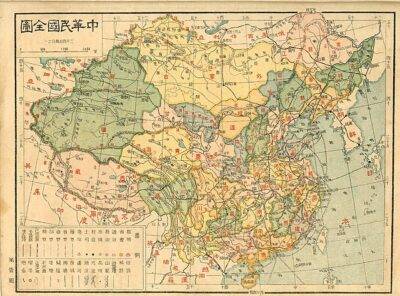
This article covers numerous lesser-known Chinese inventions that have significantly influenced the world.
China’s rich history spans thousands of years, marked by incredible contributions to global civilization. While many are familiar with well-known Chinese inventions such as paper, gunpowder, the compass, and printing, the lesser-known Chinese inventions, often overlooked, demonstrate China’s ingenuity and their profound impact on various aspects of life and technology.
The Seismograph: Early Earthquake Detection
One of the earliest and most remarkable Chinese inventions is the seismograph, created during the Han Dynasty by Zhang Heng in 132 AD. This device was designed to detect and measure earthquakes, a critical advancement in a country frequently affected by seismic activity.
Zhang Heng’s seismograph, known as the Houfeng Didong Yi, utilized a series of levers and balls to determine the direction of an earthquake. When a tremor occurred, a ball would drop from the dragon’s mouth into a frog’s mouth, indicating the direction of the quake.
This early detection system allowed for more timely responses to earthquakes, potentially saving countless lives and laying the groundwork for modern seismology.
The Chain Pump: Agricultural Revolution
The chain pump is another innovative Chinese invention that revolutionized agriculture. Developed during the Han Dynasty, this device significantly improved irrigation efficiency.

The chain pump consists of a series of wooden or metal discs attached to a chain, which is powered by human or animal labor. As the chain moves, the discs scoop up water from lower levels and lift it to higher ground, facilitating the irrigation of large fields.
This technology not only enhanced agricultural productivity but also contributed to the prosperity and stability of Chinese society.
The Stirrup: Transforming Cavalry Warfare
The invention of the stirrup during the Jin Dynasty around the 4th century AD dramatically changed cavalry warfare. Before the stirrup, riders had limited stability and control while on horseback, making it challenging to wield weapons effectively.

The introduction of the stirrup provided riders with greater balance and support, allowing them to use their legs to absorb shocks and maintain better control over their mounts.
This innovation led to more effective cavalry units, which played a crucial role in the expansion and defense of empires across Asia and Europe.
Porcelain: The Birth of Fine China
Porcelain is another significant Chinese invention that has left a lasting legacy. Originating during the Tang Dynasty, porcelain is a type of high-fired ceramic known for its strength, translucence, and delicate beauty.

The Chinese perfected the art of porcelain production, creating stunning pieces that were highly sought after by collectors and traders worldwide.
The invention of porcelain not only boosted the Chinese economy through trade but also influenced ceramic production techniques globally, leading to the development of fine China in Europe and beyond.
Paper Money: Revolutionizing Trade and Economy
The concept of paper money was first developed in China during the Tang Dynasty, around the 7th century AD, and became widespread during the Song Dynasty. Prior to this invention, economies relied on cumbersome metal coins, which were difficult to transport in large quantities.

Paper money, known as jiaozi, provided a lightweight and convenient alternative, facilitating trade and commerce on a larger scale. The introduction of paper currency revolutionized economic systems, influencing financial practices worldwide and paving the way for modern banking and monetary policies.
The Umbrella: Practical Protection from the Elements
The umbrella is an everyday item that traces its origins to ancient China. Invented over 2,000 years ago during the Han Dynasty, the umbrella was initially designed to provide protection from both rain and sun.

Early Chinese umbrellas were made of silk or paper and coated with lacquer to make them waterproof. The umbrella’s practicality and effectiveness quickly spread to other cultures, and it remains an essential tool for protection against the elements today.
The Kite: Aerial Innovation
Kites, another ingenious Chinese invention, date back to the 5th century BC. Initially, kites were used for military purposes, such as signaling and measuring distances. Over time, their uses expanded to include recreational activities and scientific experiments.

One of the most famous historical uses of kites was by Benjamin Franklin, who conducted experiments with a kite to study electricity. The invention of the kite not only provided entertainment and scientific insights but also inspired further advancements in aviation technology.
The Mechanical Clock: Pioneering Timekeeping
The Chinese also made significant contributions to timekeeping with the invention of the mechanical clock. During the Song Dynasty, the polymath Su Song constructed a remarkable astronomical clock tower in 1094 AD.
This clock featured an intricate system of gears and escapements, powered by water, to accurately measure time and display astronomical observations.
Su Song’s mechanical clock was a marvel of engineering, influencing the development of timekeeping devices in other cultures and laying the foundation for modern horology.
Tea Production: The Culture of Tea
The cultivation and consumption of tea is another profound Chinese contribution to global culture. Tea drinking originated in China during the Shang Dynasty and became an integral part of Chinese society by the Tang Dynasty.
The Chinese developed sophisticated techniques for growing, harvesting, and processing tea leaves, creating a variety of flavors and types.
The tea culture spread along trade routes, such as the Silk Road, reaching Europe and the rest of the world. Today, tea is one of the most popular beverages globally, and its origins can be traced back to ancient China.
Deep Drilling Techniques: Advancing Resource Extraction
China’s innovative deep drilling techniques date back to the Han Dynasty, when they developed methods to extract brine from deep underground to produce salt. Using bamboo drilling rigs, the Chinese were able to drill wells over 1,000 feet deep, a remarkable achievement for the time.

These techniques were later adapted for extracting natural gas and petroleum, influencing modern drilling practices. The Chinese expertise in deep drilling significantly advanced resource extraction and contributed to the development of industries reliant on these resources.
The South-Pointing Chariot: Navigational Advancements
The south-pointing chariot is an ancient Chinese navigational device that predates the magnetic compass. Invented during the Three Kingdoms period, this chariot used a differential gear system to ensure that a figurine mounted on it always pointed south, regardless of the direction in which the chariot was moving.

This invention demonstrated a sophisticated understanding of mechanical engineering and provided a reliable means of navigation long before the widespread use of the magnetic compass.
The Paddlewheel Boat: Enhancing Water Transportation
The paddlewheel boat was another innovative Chinese invention that improved water transportation. During the Tang Dynasty, the Chinese developed boats powered by paddlewheels, which were turned by human or animal labor.

This technology allowed for more efficient and faster movement along rivers and canals, facilitating trade and communication. The paddlewheel boat’s design principles were later adopted and refined by other cultures, leading to advancements in maritime transportation.
These lesser-known Chinese inventions highlight the profound impact of Chinese ingenuity on the world. From early earthquake detection and agricultural innovations to advancements in timekeeping and navigation, these contributions have shaped various aspects of human civilization.
As we continue to explore and appreciate these inventions, we gain a deeper understanding of China’s pivotal role in the development of technology and culture.


